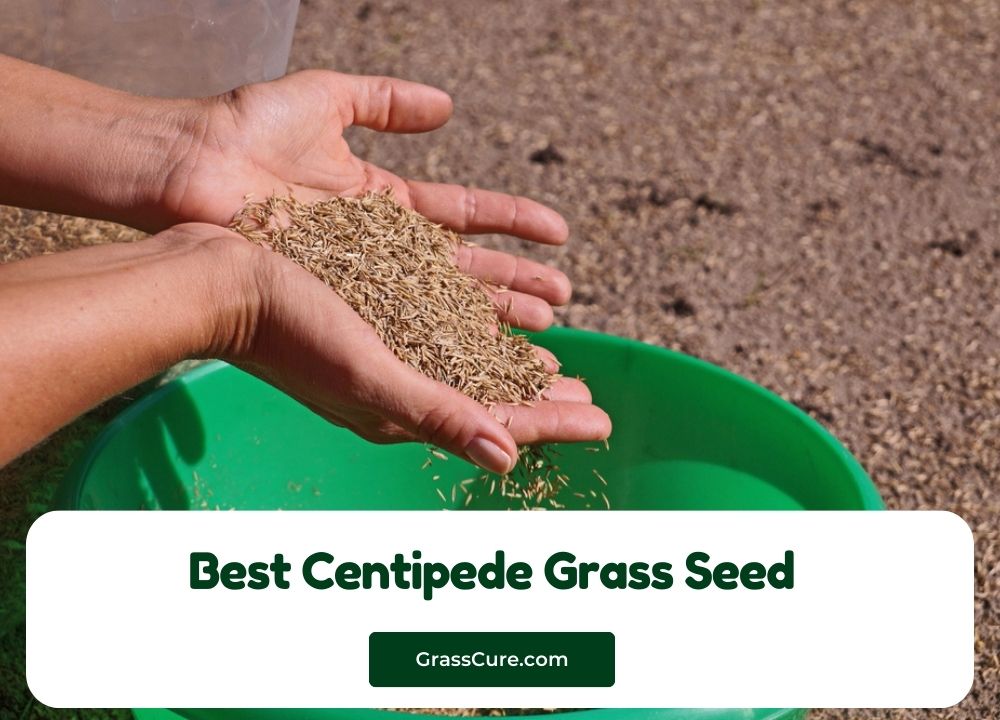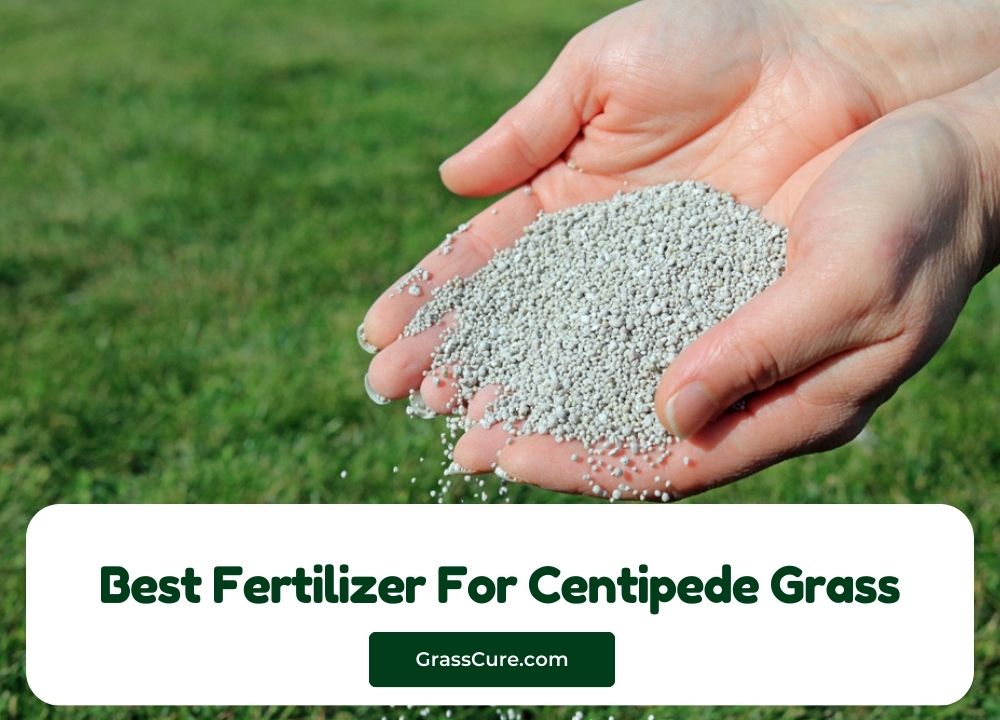Centipede grass (Cynodon dactylon) is a popular choice for homeowners seeking a low-maintenance lawn that thrives in warm climates. Known for its vibrant green color and soft texture, this grass type is ideal for creating a lush outdoor space. However, many homeowners struggle with achieving a thick, healthy lawn, as centipede grass can sometimes appear sparse or patchy. In this blog post, we’ll explore effective strategies to make your centipede grass thicker and more robust, ensuring your lawn remains beautiful and resilient throughout the growing season. Whether you’re a seasoned gardener or a beginner, these tips will help you cultivate the lush lawn you desire.
Understanding Centipede Grass
Centipede grass (Cynodon dactylon) is a warm-season turfgrass that is particularly well-suited for the southeastern United States. Its unique characteristics make it a popular choice for homeowners looking to establish a vibrant, low-maintenance lawn.
Characteristics of Centipede Grass:
- Appearance: Centipede grass features medium to fine-textured blades that grow in a dense, carpet-like formation, offering a beautiful green hue.
- Growth Habit: This grass spreads through stolons (horizontal runners), allowing it to fill in bare spots naturally over time.
- Dormancy: It goes dormant in cooler temperatures, turning a golden-brown color during the winter months, but it quickly greens up when warmer weather returns.
Ideal Growing Conditions:
- Soil Type: Centipede grass thrives in sandy, well-drained soils but can adapt to various soil types. It prefers a slightly acidic pH, ideally between 5.5 and 6.5.
- Sunlight: This grass type requires full sun for optimal growth, needing at least 6-8 hours of direct sunlight daily. While it can tolerate some shade, prolonged periods in the shade can lead to thinning.
Common Issues: Despite its many advantages, centipede grass can experience challenges that affect its thickness and overall health. Common problems include:
- Thinness: Inadequate sunlight, poor soil conditions, or improper watering can lead to a sparse lawn.
- Pests and Weeds: Centipede grass is susceptible to various pests and weed invasions, which can further hinder its growth and thickness.
Soil Preparation
Proper soil preparation is vital for cultivating a thick, healthy centipede grass lawn. It sets the foundation for robust root growth and overall grass health. Here are the key steps to ensure your soil is well-prepared:
Testing Soil pH:
- Importance of pH: Centipede grass thrives in slightly acidic soils with a pH level between 5.5 and 6.5. Testing your soil pH helps you determine whether it is within this optimal range.
- Testing Methods: You can use a soil testing kit available at garden centers or send a sample to a local agricultural extension office for analysis.
Amending Soil:
- Organic Matter: If your soil is deficient in nutrients, adding organic matter, such as compost or well-rotted manure, can improve soil fertility and structure. Organic matter enhances water retention and provides essential nutrients for grass growth.
- Nutrient Adjustments: Based on soil test results, you may need to amend your soil with specific fertilizers or lime to adjust pH levels. For instance, lime can raise the pH if it’s too acidic, while sulfur can lower it if it’s too alkaline.
Aerating the Soil:
- Benefits of Aeration: Aerating the soil involves perforating it with holes to allow air, water, and nutrients to penetrate deeper into the root zone. This process helps relieve compacted soil, promoting better root development and overall grass health.
- When to Aerate: It’s best to aerate your lawn in the spring or early summer when the grass is actively growing. Consider using a core aerator for optimal results, as it removes plugs of soil and allows for better airflow.
Proper Watering Techniques
Effective watering is essential for promoting thick, healthy centipede grass. Here are some key techniques to ensure your lawn receives the right amount of moisture:
Establishing a Watering Schedule:
- Frequency: Centipede grass generally requires about 1 to 1.5 inches of water per week, either from rainfall or irrigation. During hot, dry spells, you may need to increase watering frequency.
- Timing: Water your lawn early in the morning (between 6 AM and 10 AM) to minimize evaporation and allow grass blades to dry throughout the day, reducing the risk of disease.
Signs of Overwatering and Underwatering:
- Overwatering: Signs include yellowing grass, mushy soil, and a spongy feel underfoot. Overwatered grass may develop root rot or fungal diseases, compromising its health.
- Underwatering: Grass will show signs of stress, such as a bluish tint, wilting, or browning at the tips. If your grass starts to lose its color and appears dormant, it may need more water.
Irrigation Methods:
- Sprinklers: For even coverage, use oscillating or rotating sprinklers. Ensure they are set to cover the entire lawn without over-saturating specific areas.
- Drip Irrigation: If you prefer a more efficient approach, consider installing a drip irrigation system. This method delivers water directly to the root zone, reducing waste and promoting healthy growth.
Watering Techniques:
- Deep Watering: Aim to water deeply but less frequently. This encourages deep root growth, making the grass more drought-resistant. A good rule of thumb is to water until the soil is moist about 6-8 inches down.
- Avoiding Surface Watering: Watering too lightly can lead to shallow roots and create a dependency on frequent watering. Always strive for deeper, less frequent watering sessions.
Fertilization Strategies
Fertilization plays a crucial role in maintaining a thick, healthy centipede grass lawn. Here are some effective strategies for fertilizing your grass to promote optimal growth and health:
Choosing the Right Fertilizer:
- Nutrient Requirements: Centipede grass has lower nutrient needs compared to other grass types. A balanced fertilizer with a low nitrogen ratio, such as 15-0-15 or 16-4-8, is ideal. This helps promote healthy growth without overwhelming the grass.
- Slow-Release Fertilizers: Opt for slow-release fertilizers to provide nutrients gradually over time. This method reduces the risk of nutrient leaching and helps maintain consistent growth.
Application Timing:
- Spring Feeding: The best time to fertilize centipede grass is in late spring, just as it begins to green up and actively grow. This usually falls between late April and early June, depending on your region.
- Mid-Season Maintenance: A light application of fertilizer in mid-summer can help support ongoing growth, especially if your grass appears to be thinning or struggling.
Application Methods:
Granular Application: Use a broadcast spreader for even distribution of granular fertilizers. Follow the manufacturer’s recommendations for the application rate to avoid over-fertilization, which can harm the grass.
Liquid Fertilizers: For quick nutrient uptake, consider using liquid fertilizers. These can be applied using a sprayer and are especially effective for addressing immediate nutrient deficiencies.
Avoiding Over-Fertilization:
- Signs of Over-Fertilization: Watch for symptoms like excessive growth, dark green color, or burning at the tips of the grass blades. Over-fertilization can lead to shallow roots and increased susceptibility to pests and diseases.
- Soil Testing: Regular soil testing can help you understand your lawn’s nutrient levels and prevent over-fertilization. Amendments can be adjusted based on test results to ensure balanced nutrition.
Mowing Practices
Proper mowing practices are essential for maintaining a thick, healthy centipede grass lawn. Regular mowing encourages growth and helps establish a lush, dense turf. Here are some key tips to ensure effective mowing:
Optimal Mowing Height:
- Recommended Height: For centipede grass, the ideal mowing height is between 1.5 to 2.5 inches. Keeping the grass at this height promotes healthy root development and allows it to compete better against weeds.
- Adjusting Height: If your lawn has been allowed to grow longer, avoid cutting it down too drastically in one mow. Gradually lower the height over several mowing sessions to prevent stress on the grass.
Mowing Frequency:
- Regular Schedule: During the growing season, aim to mow once a week. If the grass grows rapidly due to warm weather and adequate moisture, you may need to mow more frequently.
- Timing: Mow when the grass is dry to avoid clumping and ensure an even cut. Mowing in the morning or late afternoon is typically ideal, as the heat of the day can stress the grass.
Sharpening Blades:
- Importance of Sharp Blades: Using sharp mower blades is crucial for achieving clean cuts. Dull blades can tear the grass, leading to ragged edges and making the grass more susceptible to disease.
- Maintenance Schedule: Sharpen mower blades at least once a season or more frequently if you mow often or have a larger lawn. This helps maintain the health of your centipede grass.
Grass Clippings Management:
- Leave Clippings on the Lawn: Consider using a mulching mower to leave grass clippings on the lawn. This practice returns nutrients to the soil, promoting healthy growth and reducing the need for additional fertilization.
- Avoiding Excess Thatch: If you notice excessive clippings accumulating, it may lead to thatch buildup, which can hinder water and nutrient absorption. In this case, consider raking or removing clippings to maintain a healthy lawn.
Pest and Weed Control
Maintaining a thick, healthy centipede grass lawn requires effective pest and weed control. These two factors can significantly impact grass health and thickness. Here are some strategies to manage pests and weeds effectively:
Identifying Common Pests:
- Common Pests: Centipede grass may attract pests such as grubs, chinch bugs, and sod webworms. Regularly inspect your lawn for signs of infestation, such as yellowing patches, wilting, or visible insects.
- Monitoring and Early Detection: Keep an eye on your lawn, especially during the growing season. Early detection of pests can prevent more extensive damage and make control easier.
Natural Pest Control Methods:
- Beneficial Insects: Encourage beneficial insects like ladybugs and predatory nematodes that help control pest populations naturally. Planting a diverse range of flowers can attract these helpful insects.
- Homemade Solutions: Consider using homemade sprays, such as a mix of water and mild dish soap, to deter pests. Always test on a small area first to ensure it won’t harm your grass.
Chemical Pest Control:
- Choosing the Right Pesticide: If pest problems persist, select a pesticide specifically formulated for centipede grass and follow the manufacturer’s instructions carefully. Use targeted applications to minimize harm to beneficial insects and the environment.
- Timing of Application: Apply pesticides during the early morning or late evening when beneficial insects are less active. This practice helps protect non-target species.
Weed Management:
- Identifying Common Weeds: Weeds like crabgrass, dandelions, and clover can compete with centipede grass for nutrients and water. Identifying weeds early helps you choose the right control method.
- Cultural Practices: Maintain a thick lawn through proper watering, mowing, and fertilization, as a healthy lawn can outcompete many weeds. Avoid over-fertilizing, which can encourage weed growth.
Herbicides:
- Pre-emergent Herbicides: Apply pre-emergent herbicides in early spring to prevent weed seeds from germinating. Be sure to choose products labeled safe for centipede grass.
- Post-emergent Herbicides: For existing weeds, use post-emergent herbicides as needed. Follow the application instructions carefully to avoid damaging your grass.
Overseeding Techniques
Overseeding is an effective way to improve the thickness and overall health of your centipede grass lawn. This technique involves spreading grass seed over an existing lawn to fill in bare spots and enhance density. Here are some key techniques for successful overseeding:
When to Overseed:
- Optimal Timing: The best time to overseed centipede grass is in late spring to early summer when the grass is actively growing, typically between mid-April and early June. This allows new seeds to germinate and establish before the heat of summer.
Preparing the Lawn:
- Mowing: Begin by mowing your existing lawn to a lower height (about 1.5 inches) to expose the soil and make it easier for new seeds to make contact with the ground.
- Clearing Debris: Remove any debris, such as leaves or twigs, that could impede seed-to-soil contact. This ensures that the new seeds can settle into the soil properly.
Aerating the Soil:
Aeration Benefits: Aerating the lawn before overseeding can significantly enhance seed germination. Aeration creates holes in the soil, allowing better seed-to-soil contact and improving water and nutrient absorption.
How to Aerate: Use a core aerator to pull out plugs of soil, which will help loosen compacted soil and create a favorable environment for the new seeds.
Choosing the Right Seed:
- Quality Seed: Select high-quality centipede grass seed from a reputable source. Look for varieties that are specifically bred for your region and conditions to ensure better adaptation and growth.
- Seed Rate: Follow the recommended seeding rate for centipede grass, typically around 1 to 2 pounds of seed per 1,000 square feet. This will help ensure adequate coverage without overcrowding.
Spreading the Seed:
- Even Distribution: Use a broadcast spreader to distribute the seed evenly across the lawn. Walk in straight lines to ensure consistent coverage, and consider applying half the seed in one direction and the other half at a right angle to improve distribution.
- Lightly Rake: After spreading the seed, lightly rake the area to help the seeds settle into the soil and improve seed-to-soil contact.
Post-Overseeding Care:
- Watering: Keep the newly overseeded area consistently moist. Water lightly and frequently (about 2-3 times a week) until the new grass is established. Avoid heavy watering that could wash away seeds.
- Fertilization: Consider applying a starter fertilizer to provide essential nutrients for the new grass. A balanced fertilizer can help support early growth and establishment.
Conclusion
Creating and maintaining a thick, healthy centipede grass lawn requires a combination of proper care and attention to detail. By understanding the specific needs of centipede grass—from soil preparation and watering techniques to effective fertilization, mowing practices, pest and weed control, and overseeding—you can cultivate a vibrant outdoor space that enhances the beauty of your property.
Implementing these strategies will not only improve the thickness of your lawn but also promote its resilience against environmental stressors and pests. Remember, a lush lawn is a reflection of the time and effort you invest in its care. So, embrace these practices and enjoy the rewards of a thriving centipede grass lawn that you can take pride in for years to come. If you have any questions or want to share your own experiences with centipede grass care, feel free to leave a comment below!






